Crusty Artisan Bread
This post may contain affiliate links. Read my full disclosure policy.
This crusty bread recipe is astonishingly easy—no kneading required—and makes three beautiful loaves, which you can bake as needed.
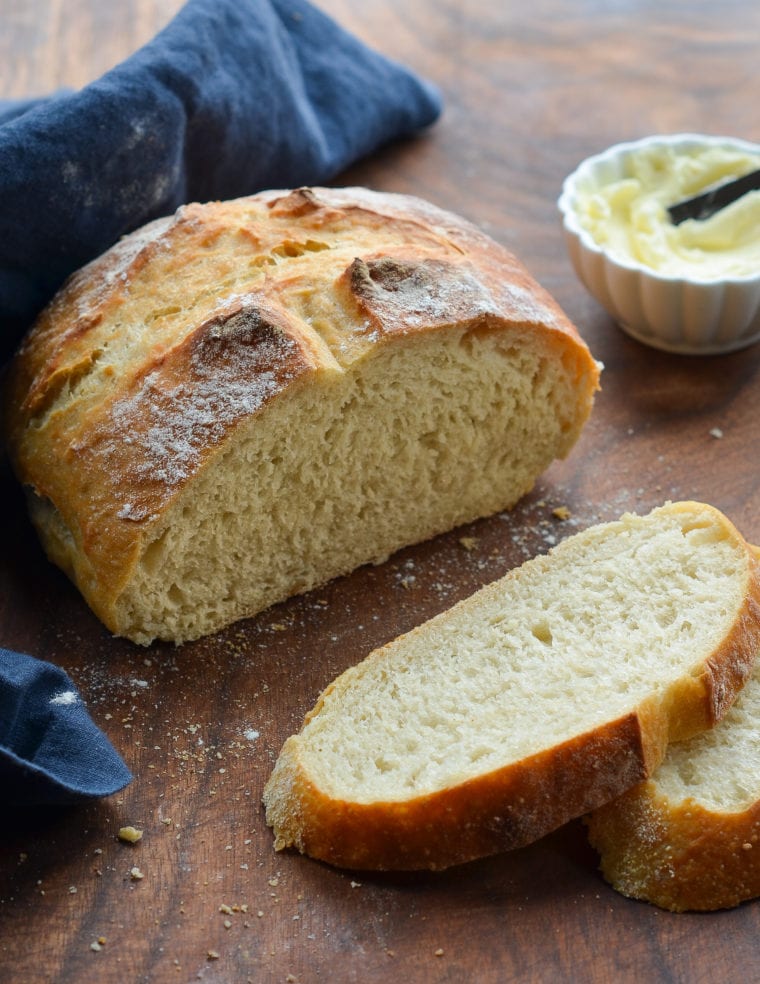
This homemade artisan bread recipe is astonishingly easy, and it makes enough for three delicious loaves, which you can bake as needed. What’s more, the dough takes just five minutes to make, does not require kneading or any special equipment, and can rest in the fridge for up to two weeks (the flavor becomes more complex the longer it sits). The recipe is modestly adapted from one of my favorite baking books, Artisan Bread in 5 Minutes A Day by Jeff Hertzberg M.D. and Zoë François.
Table of Contents
What You’ll Need To Make Crusty Artisan Bread
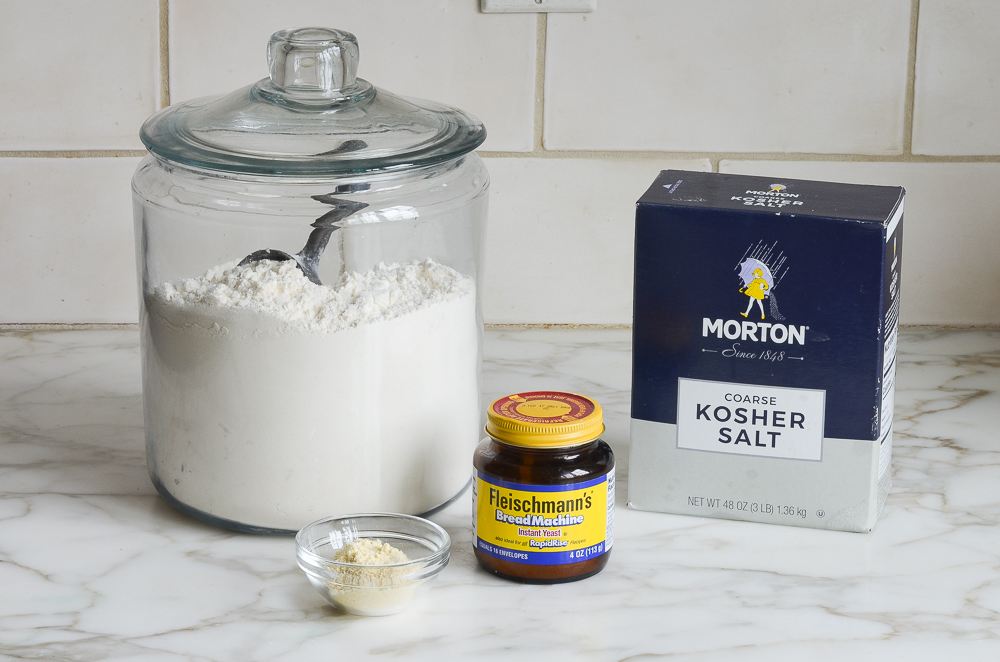
This recipe has just four ingredients: all-purpose flour, instant yeast, kosher salt, and water. (The cornmeal is for dusting the pan.) As you can see, I use instant (or rapid-rise) yeast. Active dry yeast may be used instead of instant yeast, however, the dough will take longer to rise. To give active dry yeast a boost, you can dissolve it in the lukewarm water and let it sit until frothy, about 10 minutes. After that, add it to the flour and proceed with the recipe.
How To Make Crusty Artisan Bread
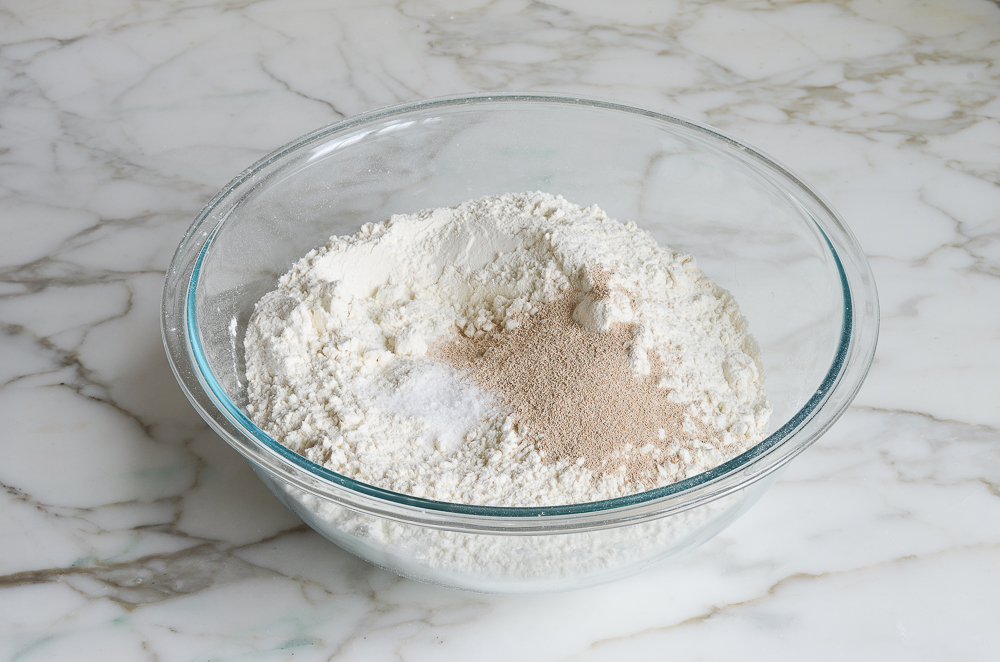
In a very large (6-quart) bowl, combine the flour, salt, and yeast. Mix to combine.
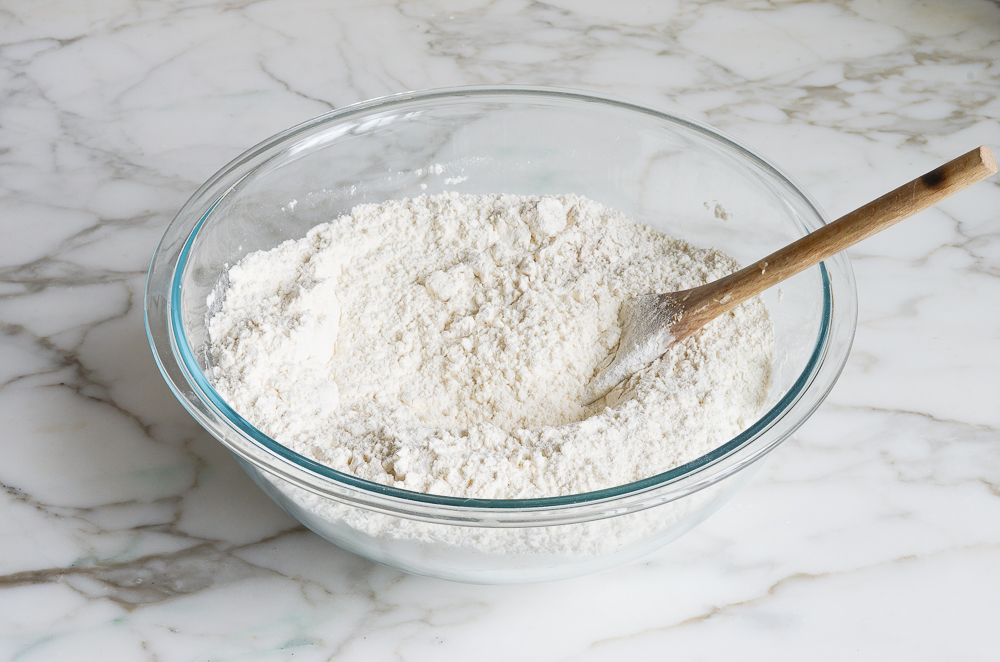
Add 3 cups of lukewarm water (no need to be exact but lukewarm is about 100°F).
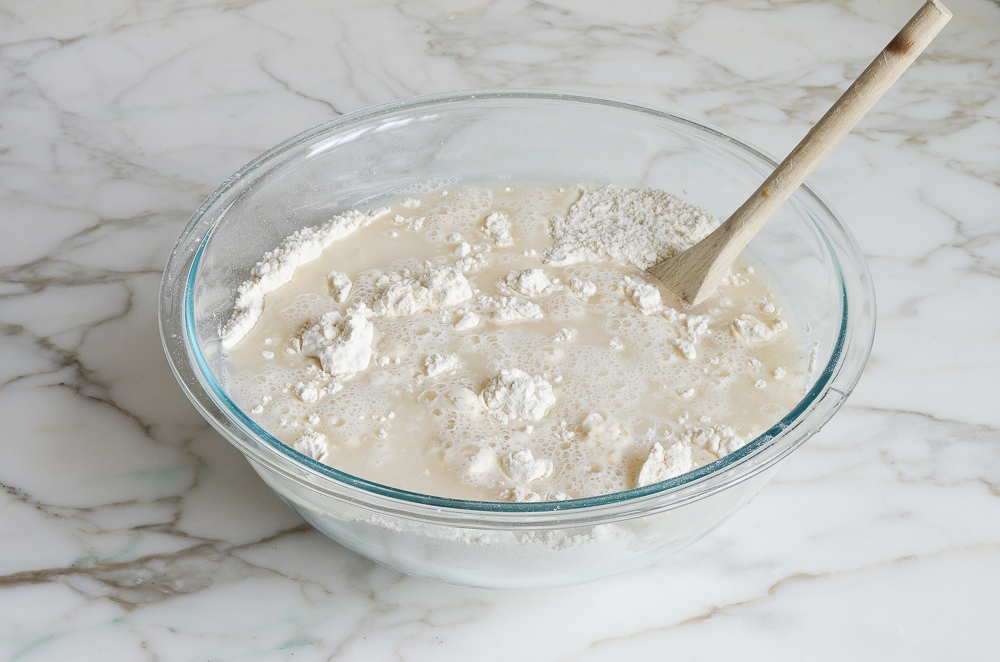
Stir with a wooden spoon until the mixture is uniformly moist, without any patches of flour.
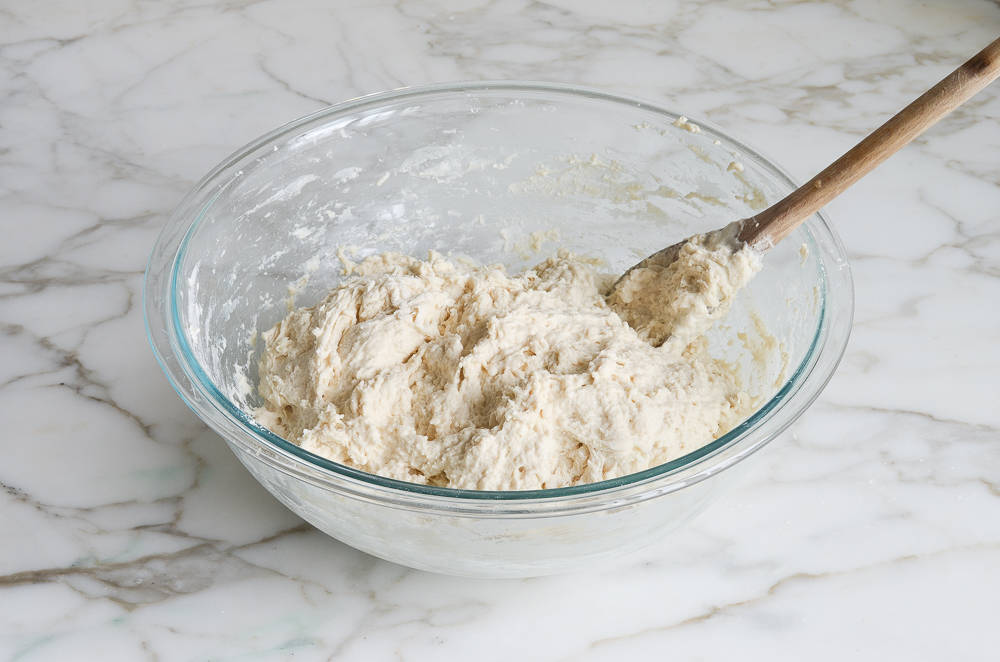
The dough should be sticky and conform to the shape of the bowl. If your dough is too dry, add a few tablespoons more warm water. If it’s too wet, add a few tablespoons of flour. Cover the bowl loosely with plastic wrap and let it sit on the counter in a warm spot for 2 hours. As you can see below, it will rise a lot!
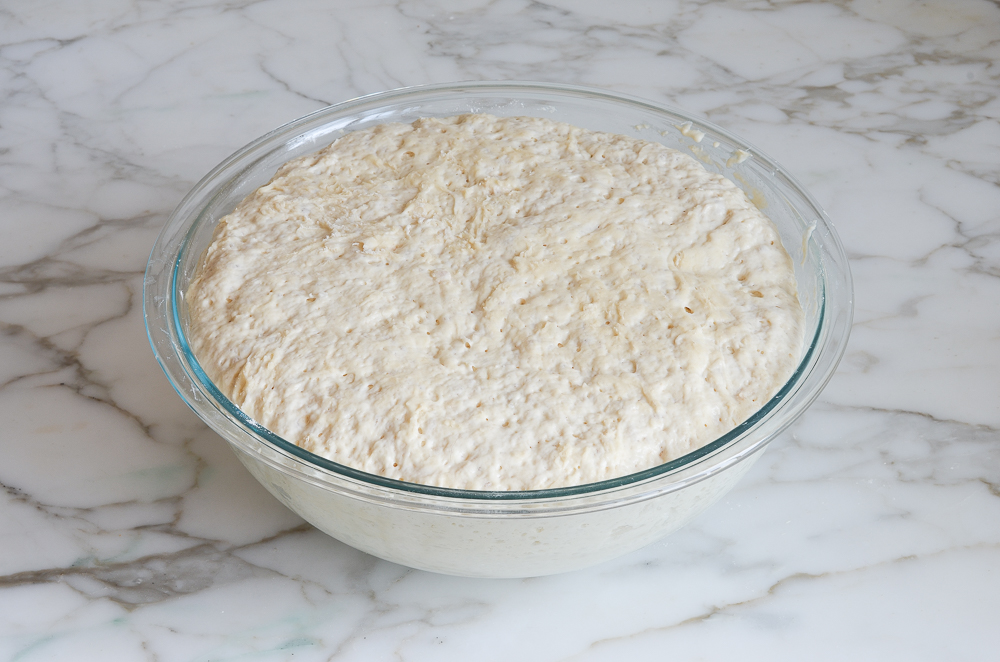
When you’re ready to bake a loaf, pull out one-third of the dough.
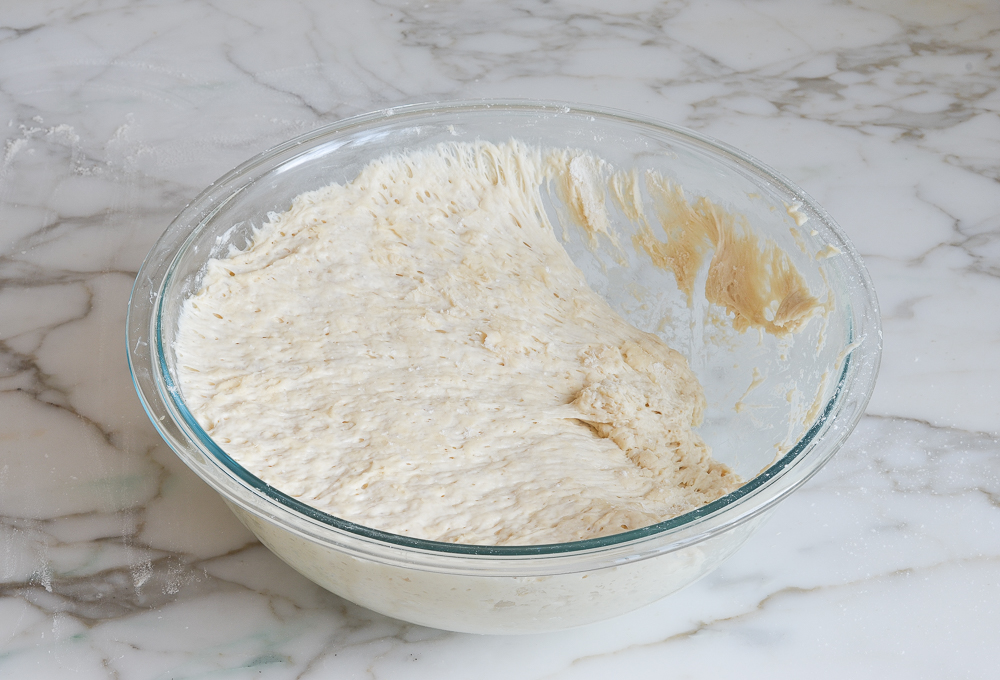
Coat the outside lightly with flour (you don’t want to incorporate more flour into the dough, you just want to be able to handle it). Gently work the dough into a smooth ball, stretching the surface and tucking the ends underneath.
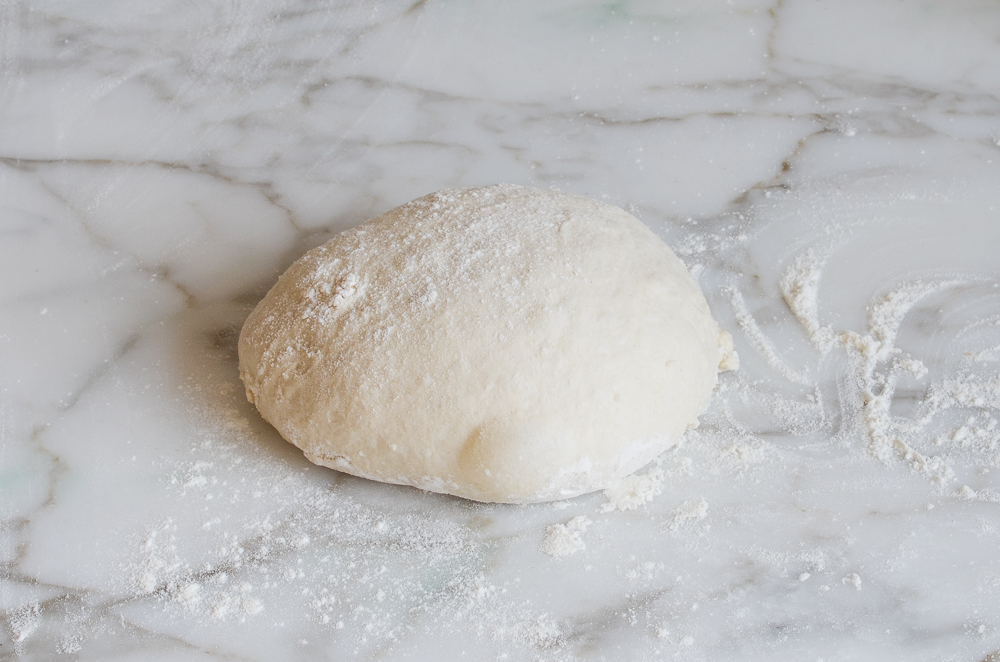
Put the dough ball onto a cornmeal-dusted baking sheet and let rest at room temperature, uncovered, for about 40 minutes. (If the dough has been refrigerated, allow it to rise for 60 minutes, or up to 90 minutes if you want a more open and airy crumb structure.) The dough will rise a bit. It may also spread/flatten a bit; that’s okay.
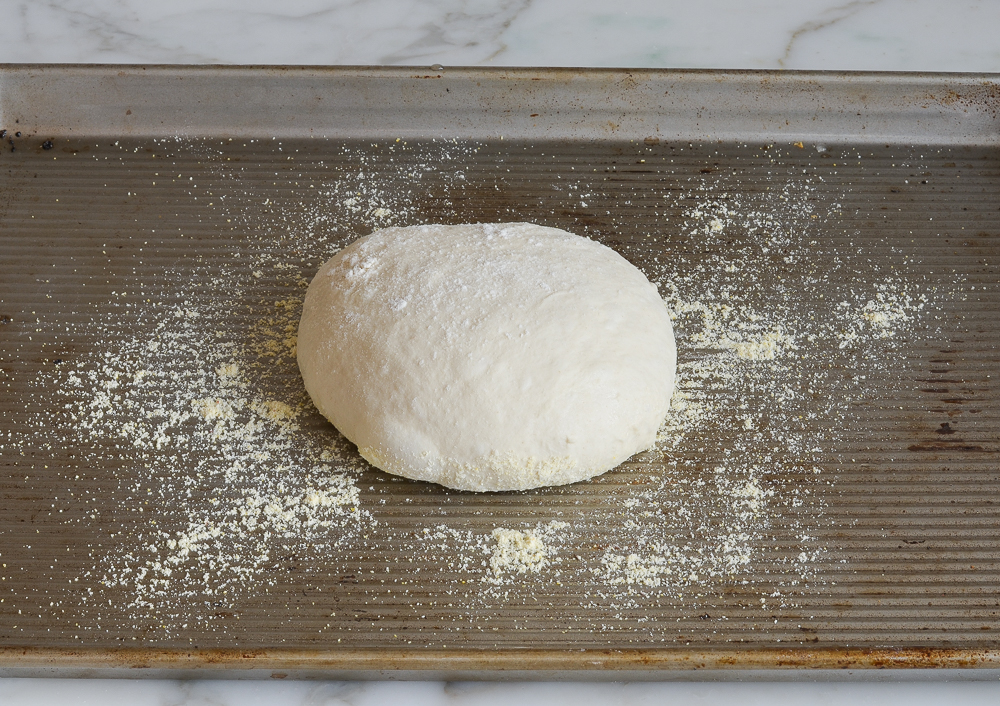
The dough will rise a bit.
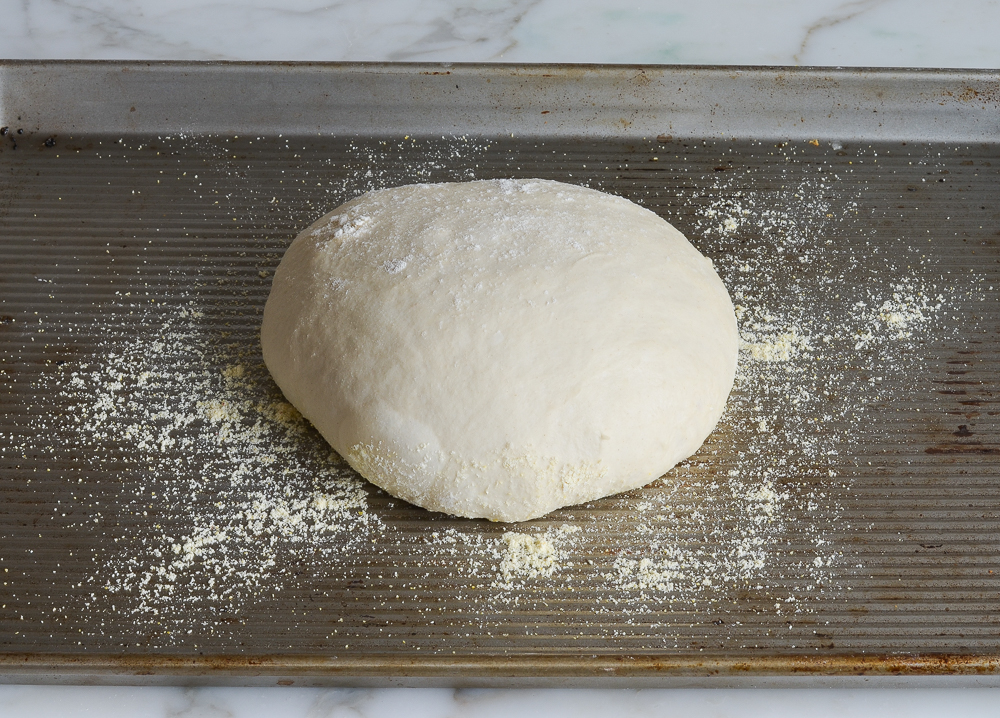
Generously dust the dough with flour. Using a sharp knife, make a few 1/2-inch-deep slashes in the dough — a scallop, cross, or tic tac toe pattern all look nice.
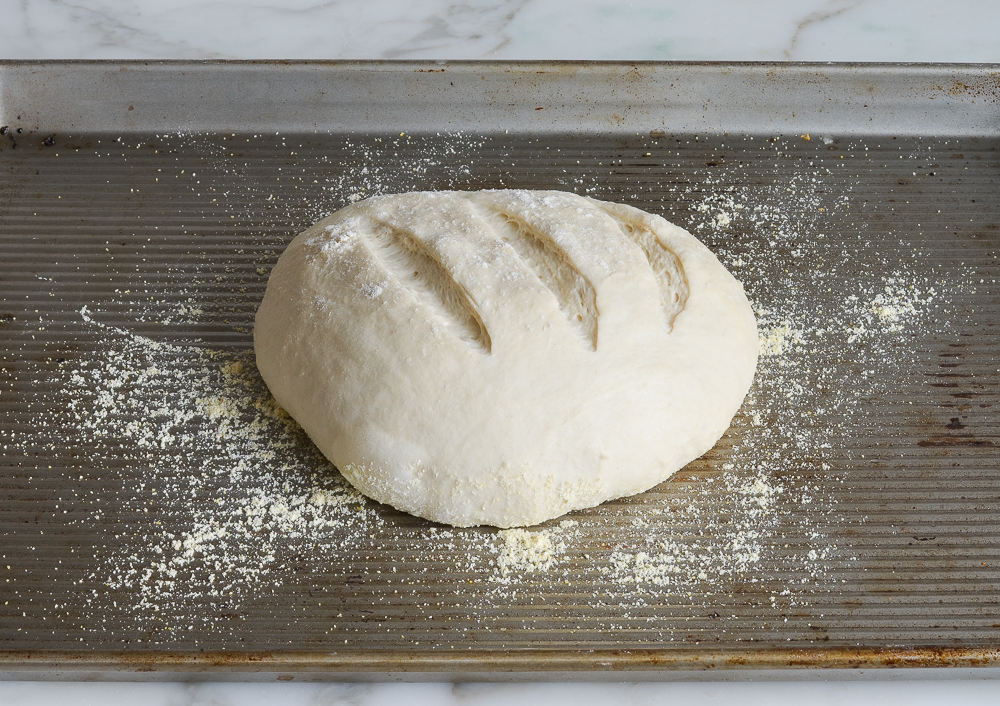
Set a metal pan on the bottom rack of a preheated 450°F-oven. Slide the baking sheet with the dough into the oven, and carefully fill the metal cake pan with one cup of hot tap water. This creates steam in the oven. (Try to do this quickly so as not to let heat out of the oven.) Bake until the loaf is golden brown, about 30 minutes. Cool completely on a wire rack.
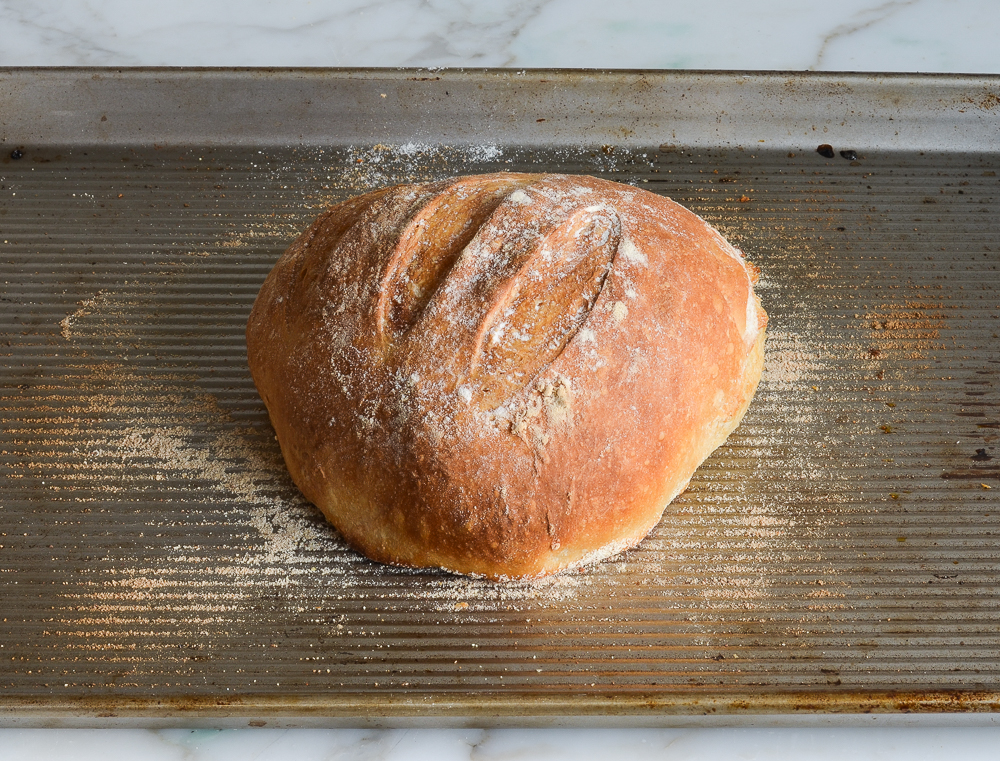
This bread is best enjoyed fresh on the day it is made. Once sliced, place the loaf cut-side down on a cutting board or plate and leave it uncovered.
How To Freeze
The dough can be portioned into thirds and frozen in airtight plastic containers for up to 1 month. Defrost the dough in the refrigerator overnight, then shape, rest and bake as usual. The baked loaves can also be frozen whole or sliced. Wrap in a zip-top freezer bag and freeze for up to 1 month. To thaw, take the bread out of the freezer and let it come to room temperature, about 3 hours. Reheat in a 350°F oven until warmed through, about 10 minutes.
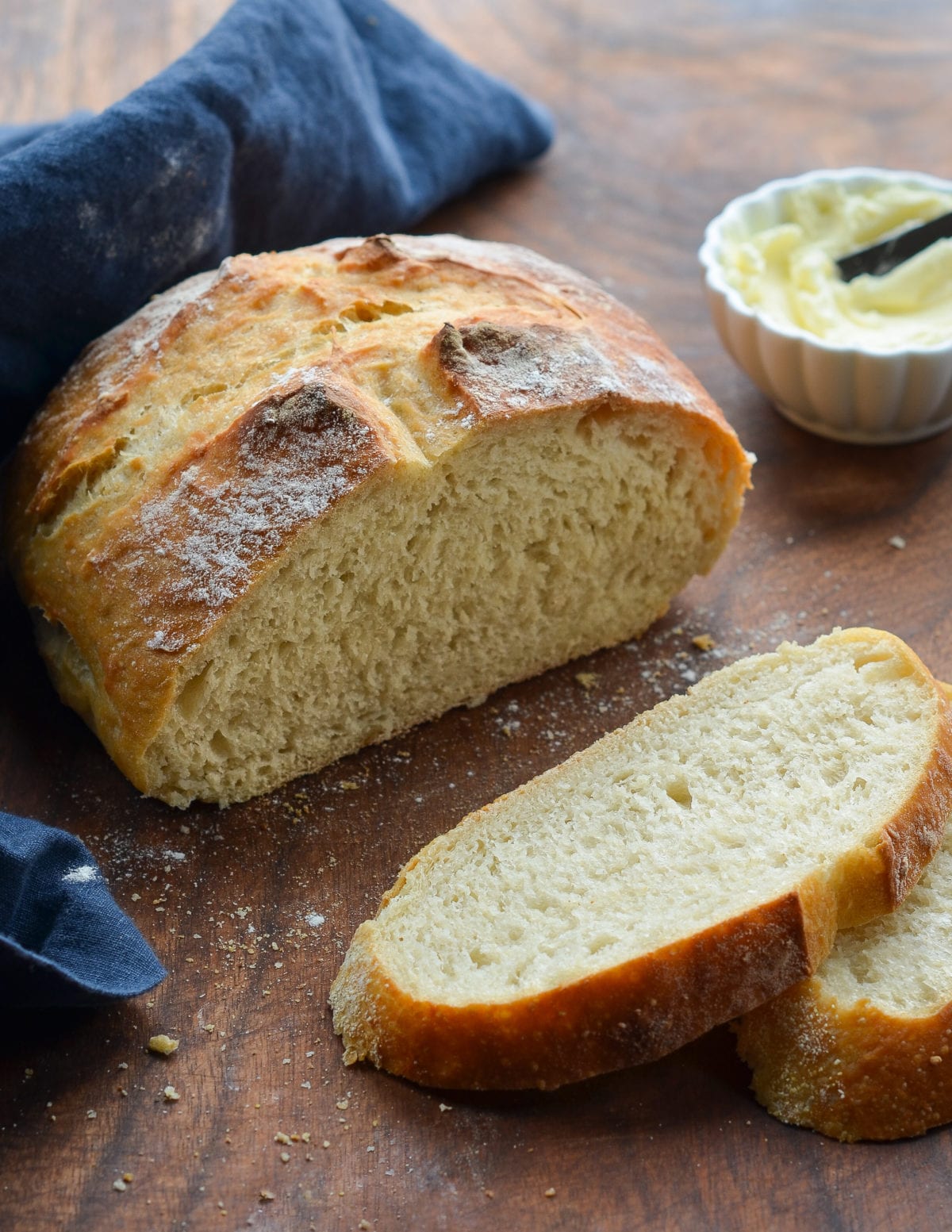
You May Also Like
Crusty Artisan Bread
This crusty bread recipe is astonishingly easy—no kneading required—and makes three beautiful loaves, which you can bake as needed.
Ingredients
- 6½ cups all-purpose flour, spooned into measuring cup and leveled-off (preferably King Arthur; see note)
- 4 teaspoons kosher salt
- 1½ tablespoons instant/rapid-rise yeast (see note)
- 3 cups lukewarm water (no need to be exact but lukewarm is about 100°F)
- Cornmeal, for dusting the pan
Instructions
- In a very large (6-quart) bowl, whisk together the flour, salt, and yeast. Add the water and stir with a wooden spoon until the mixture is uniformly moist, without any patches of flour. The dough should be sticky and conform to the shape of the bowl. If your dough is too dry, add a few tablespoons more warm water. If it's too wet, add a few tablespoons of flour. (See the step-by-step photos for guidance on what the dough should look like.) Cover the bowl loosely with plastic wrap and let it sit on the counter in a warm spot for 2 hours. If you plan to bake a loaf immediately, proceed to the next step. Otherwise, place the bowl of dough in the refrigerator to be used over the next 14 days. (Once refrigerated, the dough will shrink back a bit; that's okay. Do not punch down the dough at any point, and keep it loosely covered with plastic wrap.)
- Dust a sturdy baking sheet with cornmeal.
- Dust the surface of the dough and your hands lightly with flour. Pull out one-third of the dough and coat the outside lightly with flour (you don't want to incorporate more flour into the dough, you just want to be able to handle it). Gently work the dough into a smooth ball, stretching the surface and tucking the ends underneath, adding more flour as needed so it doesn't stick to your hands. (Don't overwork the dough; this process should only take about 30 seconds.) Put the dough ball onto the prepared baking sheet and let it rest at room temperature, uncovered, for about 40 minutes. (If the dough has been refrigerated, allow it to rise for 60 minutes, or up to 90 minutes if you want a more open and airy crumb structure.) The dough will rise a bit. It may also spread/flatten a bit; that's okay.
- Preheat the oven to 450°F. Set one rack in the lowest position of the oven and one rack in the middle position. Place a metal pan (any metal cake pan or broiler pan will work; just don't use glass) on the bottom rack. (You will fill this with water later to create steam in the oven).
- Generously dust the dough with flour. Using a sharp knife, make a few ½-inch-deep slashes in the dough -- a scallop, cross, or tic tac toe pattern all look nice.
- Slide the baking sheet with the dough into the oven, and carefully fill the metal cake pan with one cup of hot tap water. (Try to do this quickly so as not to let heat out of the oven.) Bake until the loaf is golden brown, about 30 minutes. Cool completely on a wire rack.
- This bread is best enjoyed fresh on the day it is made. Once sliced, place the loaf cut-side down on a cutting board or plate and leave it uncovered. (If it lasts beyond a day, I suggest slicing and freezing.)
- Freezer-Friendly Instructions The dough can be portioned into thirds and frozen in airtight plastic containers for up to 1 month. Defrost the dough in the refrigerator overnight, then shape, rest and bake as usual. The baked loaves can also be frozen whole or sliced: Wrap in a zip-top freezer bag and freeze for up to 1 month. (If you plan to use slices one at a time, place pieces of parchment between them so they don't stick.) To thaw, take the bread out of the freezer and let it come to room temperature on the countertop. Reheat in a 350°F oven until warmed through, about 10 minutes.
- Note: Active dry yeast may be used instead of instant/rapid-rise yeast, however, the dough will take longer to rise. To give active dry yeast a boost, you can dissolve it in the lukewarm water and let it sit until frothy, about 10 minutes. After that, add it to the flour and salt, and proceed with the recipe.
- Note: I use King Arthur flour, which is higher in protein than some other all-purpose flours. If using a flour with a lower protein content, such as Gold Medal, you will likely need to add a few more tablespoons of flour.
Nutrition Information
Powered by ![]()
- Serving size: 1 slice
- Calories: 100
- Fat: 0 g
- Saturated fat: 0 g
- Carbohydrates: 21 g
- Sugar: 0 g
- Fiber: 1 g
- Protein: 3 g
- Sodium: 64 mg
- Cholesterol: 0 mg
This website is written and produced for informational purposes only. I am not a certified nutritionist and the nutritional data on this site has not been evaluated or approved by a nutritionist or the Food and Drug Administration. Nutritional information is offered as a courtesy and should not be construed as a guarantee. The data is calculated through an online nutritional calculator, Edamam.com. Although I do my best to provide accurate nutritional information, these figures should be considered estimates only. Varying factors such as product types or brands purchased, natural fluctuations in fresh produce, and the way ingredients are processed change the effective nutritional information in any given recipe. Furthermore, different online calculators provide different results depending on their own nutrition fact sources and algorithms. To obtain the most accurate nutritional information in a given recipe, you should calculate the nutritional information with the actual ingredients used in your recipe, using your preferred nutrition calculator.

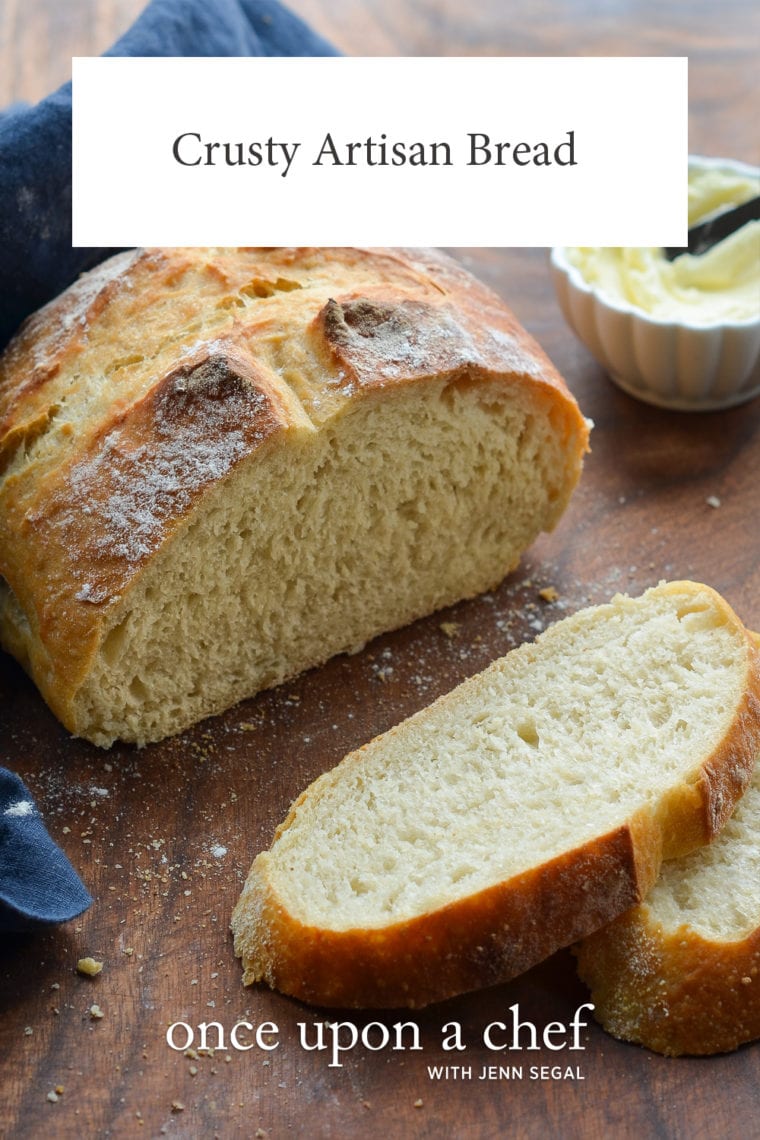
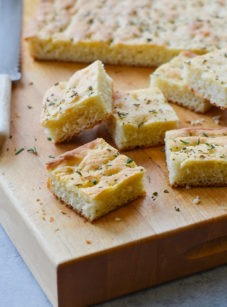
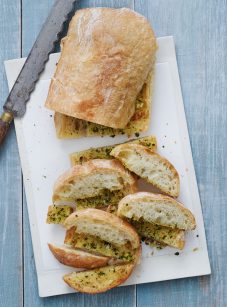
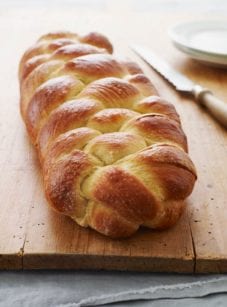
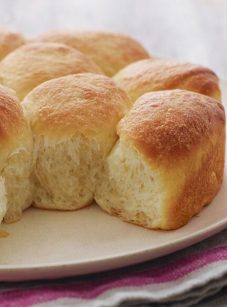
Hi. I’d like to try this recipe (I have make NYTimes version) I appreciate your easy to follow directions. I’m wondering if your recipe is the same hydration as your inspiration recipe from hertzberg. I just ordered that on Amazon but might not arrive for a couple days. I’d like to keep the dough in the fridge and whip up a loaf each day. He said the hydration ratio was important.
Hi Linda, the hydration ratio is the same. Hope you enjoy the bread!
Hi – I am so disappointed because I must have done something wrong. The dough rose beautifully and looked like yours after 2 hours. When I tried to remove 1/3 and shape it into a smooth ball, it was so sticky, I could not shape it. I tried working in more flour, but I was trying to keep it to a minimum. I finally got it into a round, flat shape but it was not smooth. At this point, it probably has been over worked and even if it rises, will be as hard as a brick. What do you think I did wrong? When I removed a third of the dough after it had risen, the consistency was very webby.
Hi Sue, this is a very sticky dough but I’m sorry you struggled with it. What brand of flour did you use? How did the bread come out?
Hi Jenn – I used King Arthur flour. The bread come out OK. It did not rise as much as yours but it was tasty. It was almost like a ciabatta.
I’m guessing that you may just not have used enough flour. I wouldn’t be afraid to add a bit more.
I have been making this recipe for years. My quest was to get the best crusty crust. I finally arrived at baking it in a covered cast iron Dutch oven (not a glazed one…the old fashioned one). I preheat the Dutch oven in the oven for about 35-40 minutes while the dough is resting. I typically put the dough in a dough basket with a cloth liner, this helps to make the transfer of the dough to the hot pot easier. After transferring the dough, I use kitchen shears to make the cuts on the top, then cover with the lid and bake for 30 minutes. I remove the lid, turn on the convection fan, and cook for an additional 5-7 minutes. Remove from the pan and cool on a wire rack.
Easy and amazing – perfect! My family raves every time I make this. I also love that I can put some in the freezer for future use. Another hit, Jen!
The water evaporated on the baking sheet and my smoke alarm went off. Disappointed. Will look for different recipe.
You aren’t supposed to use a baking sheet for the water – it needs to be a baking pan (for cakes) with higher edges.
Love the look of this bread recipe but, is it possible to give the quantities in grams? Cups are so inexact
Hi James, The great majority of my recipes (including this one) include conversions to metric/weight measurements. To view them, scroll down to the recipe, and immediately under the recipe title on the right side, you’ll see a little toggle. If you move it from “cup measures” to metric, you’ll see measurements that will work for you. Hope that helps!
We have a conversion chart that can be used when needed,many cookbooks have them in the back by the index.Sometimes it`s better to go by feel,to sticky? Add flour.To dry? Add water.
Hi Jenn,
I only have a 4 quart mixing bowl. Will I be able to use this one or do I need to cut the recipe in half.
Hi Sandy, I’d recommend cutting the recipe in half. Hope you enjoy!
I’ve made this bread numerous times and it is over the top delicious! I actually made two of them last Thanksgiving, made bread cubes out of them, and used it in your stuffing recipe. My guests went nuts and made me promise to do it again this year. Is it possible to bake it in a cast iron Dutch oven? Thank you in advance for your answer. 😊
So glad you like the bread! I’ve never made it in a Dutch oven, but a number of readers have commented that they have successfully.
Hi Jenn,
I have a vigorous sourdough starter on my counter and wondering if I could swap some of it in, in lieu of the yeast? Part of the charm of your recipe is its ease and unfussiness so seems silly to complicate it. Just want to put my starter to use and all the sourdough recipes I’ve read literally involve an entire day of kneading and rising….
Thanks!
Hi Adrienne, Because I’ve never tried this with sourdough starter, I’d be hesitant to recommend it here — sorry!
Wonderful! Been giving loaves to friends and they can’t get enough. One recipient asked if I had a professional baker’s oven LOL! No, I actually use my large toaster oven and it comes out beautifully. I’ve a request for a boule with raisins, so that is my next project. I would attach a photo but I don’t do instagram. Thanks for a simple, chewy, soft, rustic recipe!